Freeze-Thaw Damage
Concrete affected by freeze-thaw damage (FTD) has crack networks well below the finished surface and around joints. Many factors make concrete susceptible to FTD, ranging from improper proportioning (inadequate air and/or excessive water) and poor materials (unsound aggregates) to improper design and project specifications. Joints can be especially susceptible to spalling from FTD when they drain poorly. Deicing and anti-icing chemicals may exacerbate and accelerate FTD.
Significant damage can also occur if concrete freezes while fresh or plastic. While this is generally a cold weather curing issue, it results in significant, widespread cracking.
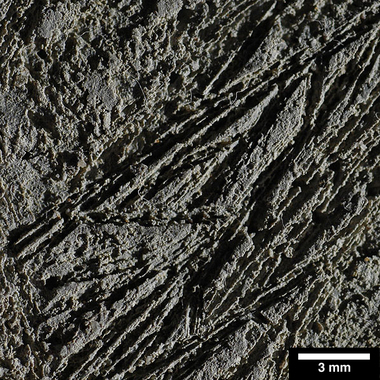
Photograph of the crows foot pattern of cracks that is typical when concrete freezes while plastic.
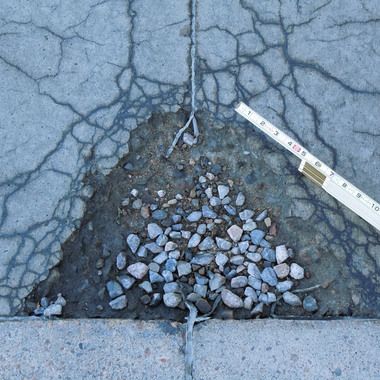
Photograph of a spalled joint where freeze-thaw damage and alkali-silica reaction occurred. The white scale is in inches.
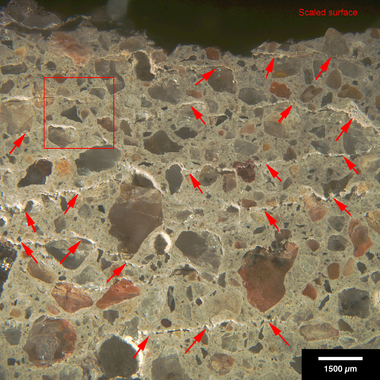
Reflected light photomicrograph of cracks that are sub-parallel to the finished (now scaled) surface of a frost damaged core.
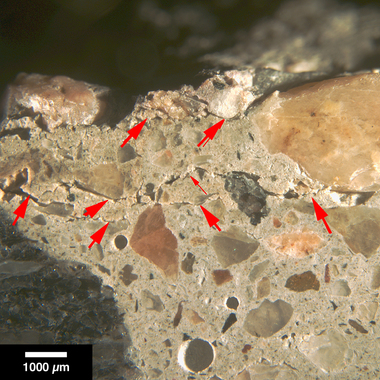
Reflected light photomicrograph of freeze-thaw cracking in a pavement that lacked air entrainment.
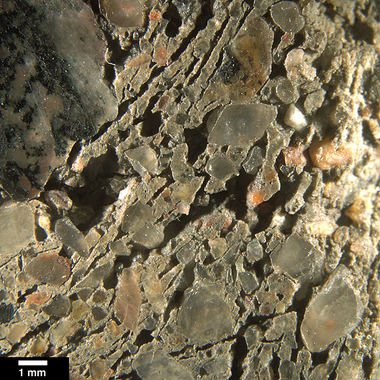
Reflected light photomicrograph of cracks that formed when the concrete froze in the plastic state.
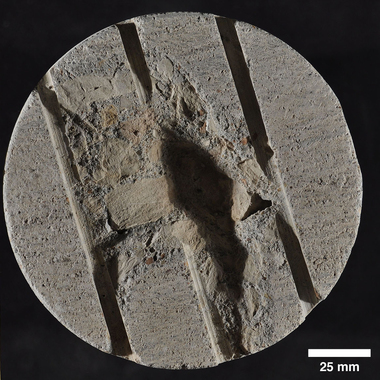
Photograph of a large popout associated with a particle of absorptive limestone in an airfield pavement core.
Questions? We have answers. Contact us.
Give us a call at 303.938.0166 to get your project rolling.
